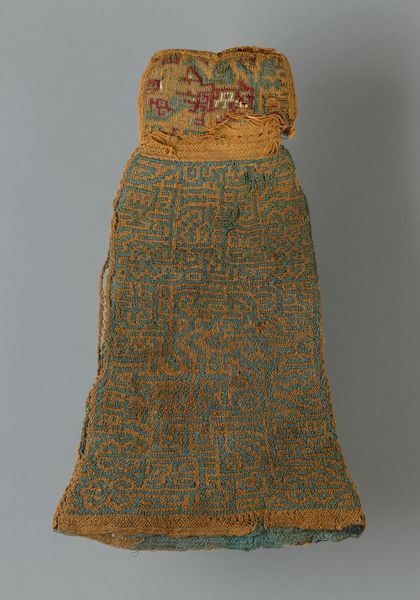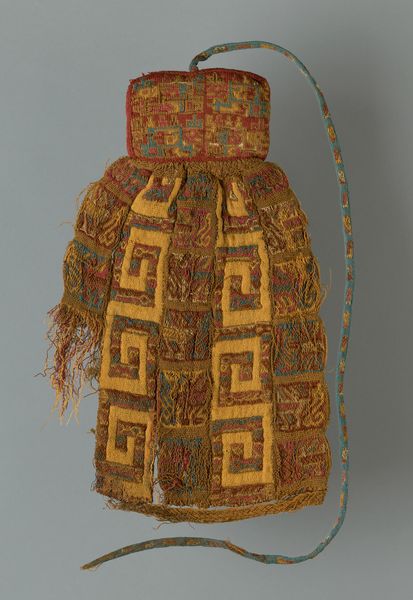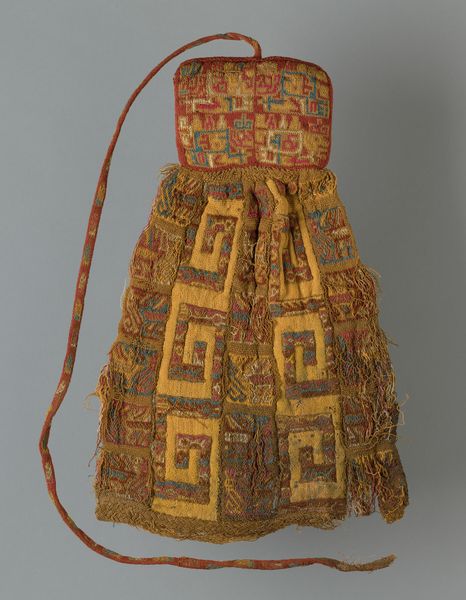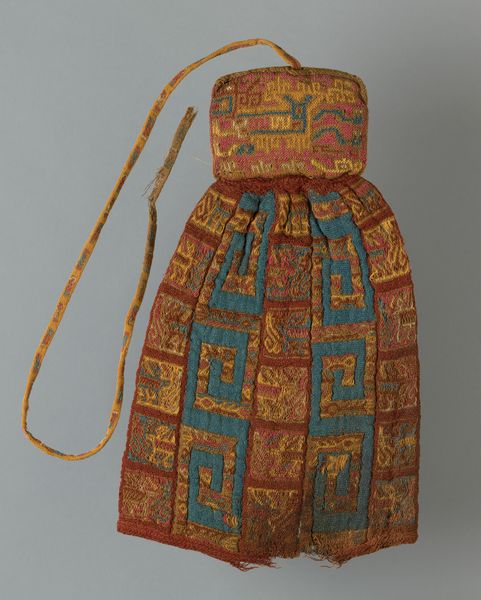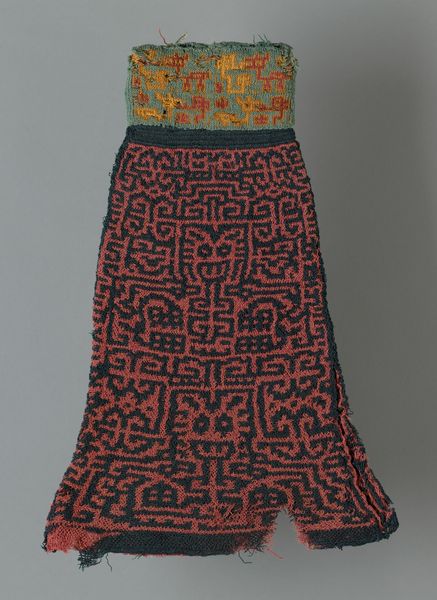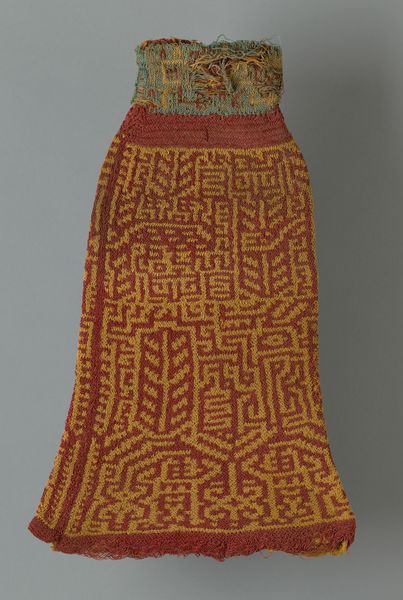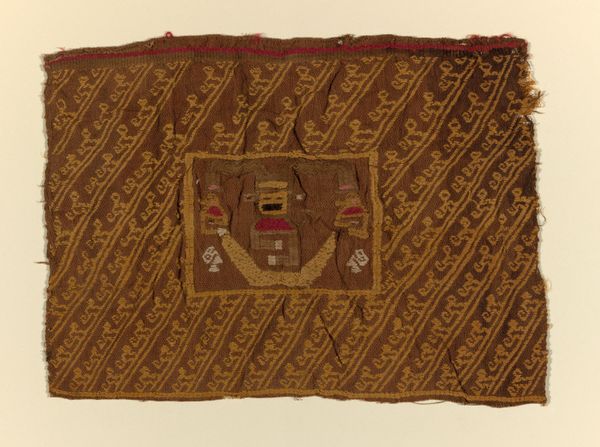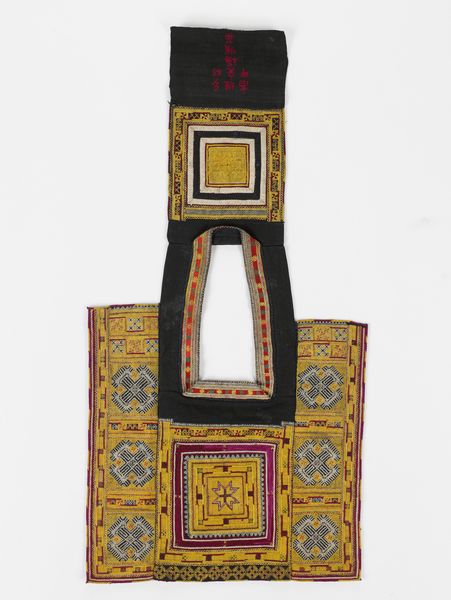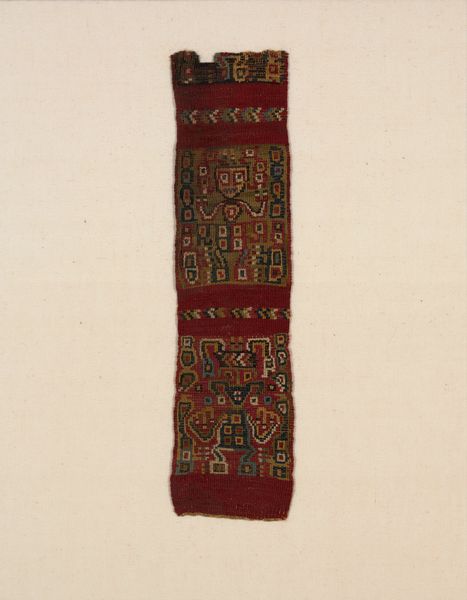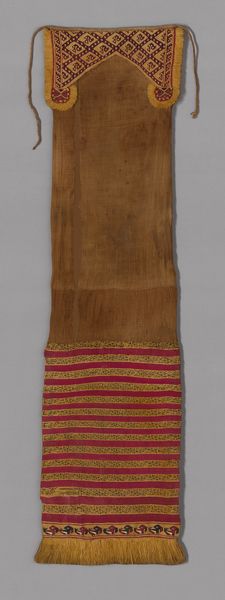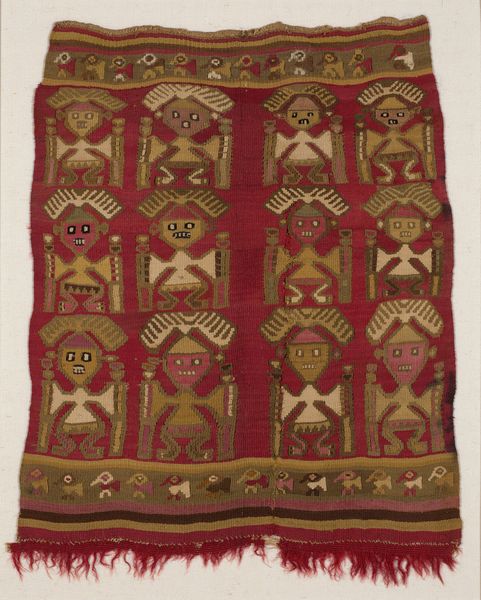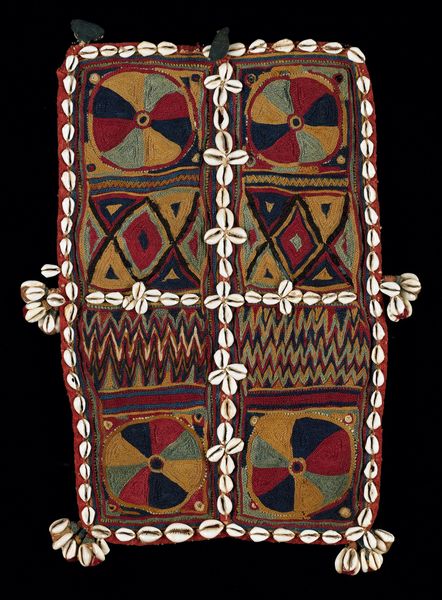
fibre-art, weaving, textile
#
fibre-art
#
weaving
#
textile
#
geometric
#
indigenous-americas
Dimensions: 5.2.7 × 19.4 cm (20 3/4 × 7 5/8 in.)
Copyright: Public Domain
Curator: This is a Tassel from the Nazca culture, dating approximately from 500 to 900. The Art Institute of Chicago is fortunate to hold it in their collection. It’s a woven textile piece featuring geometric patterns. Editor: Wow, it's so vibrant! Despite its age, the colors still pop. There’s a playful energy from those shapes. What was it used for? Curator: Objects like these held symbolic weight; their imagery reflects societal values and perhaps even specific rituals or social statuses. The geometric forms may embody codified narratives or mythologies of the Nazca people. Editor: So, we’re looking at more than just decorative weaving; it is communication. The specific arrangements— the blue meanders juxtaposed against the golds—could that signify power dynamics, gender roles, or perhaps ancestral connections within the Nazca society? Curator: Exactly. Textiles in many ancient Andean societies weren't merely utilitarian; they served as powerful visual tools. Color alone in Andean textiles communicates status. Dyes held prestige, due to their sourcing being dependent on certain locations, climates and production ability, suggesting wealth and importance attached to its wearer, in life and burial contexts. Editor: Right, burial contexts – I always wonder about labor exploitation in producing textiles such as this, whether the individuals creating such works had relative autonomy. The fine weaving also suggests specialized labor. What kind of societal structures enabled these beautiful works to be created? Curator: Indeed, behind the beauty and intricacy lies a complex web of social organization. Examining the object prompts questions about who had access to materials, who possessed the skill, and whose narratives were being preserved. The cultural continuity we see through symbolic forms connects us to indigenous Americas, whose struggles and resilience should not be ignored when observing art. Editor: I see this textile piece as a thread that directly connects past and present inequalities; our act of viewing can either continue harmful erasures or create a critical awareness to those power dynamics. This tassel serves as a vital point for thinking about our social accountability. Curator: I concur entirely; by interpreting these objects, we activate remembrance, inviting broader understanding of civilizations rooted in history but still reverberating today.
Comments
No comments
Be the first to comment and join the conversation on the ultimate creative platform.
